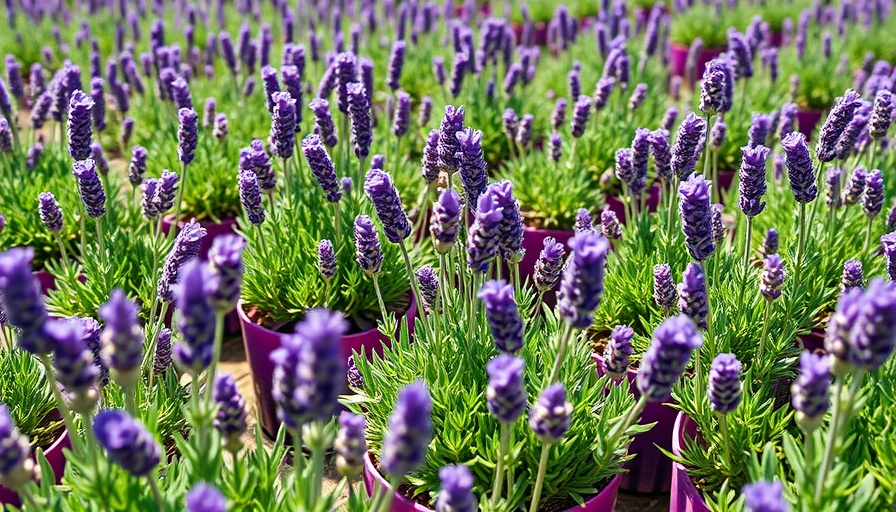
Unlock the Secrets to Endless Lavender Blooms
This summer, let lavender fill your garden with its enchanting aroma and stunning beauty. If you're fascinated by this delightful plant, you’re in for a treat! Not only will you learn the art of propagating lavender, but you’ll also discover how this resilient herb can transform your outdoor space into a haven for both you and beneficial pollinators.
Why Grow Lavender?
Lavender is more than just a pretty face in the garden; it’s a powerhouse of benefits! This hardy perennial is drought-resistant, making it an ideal choice for low-maintenance landscaping. Not only does it entice bees and butterflies, enhancing your garden's ecosystem, but its calming scent is also a favorite in aromatherapy. Whether used in culinary dishes or as a fragrant addition to homemade sachets, the possibilities are endless when it comes to utilizing lavender.
The Art of Propagation: A Step-by-Step Guide
Propagation is the simplest way to expand your lavender collection. Start by selecting healthy softwood stems during mid-summer, when the plant is fully active. Here’s how:
- Selection: Use clean, sharp tools to take cuttings from new growth that has no buds or flowers.
- Prepare the Cuttings: Take 3-4 inch cuttings and place them in water or wrap them in a moist paper towel temporarily.
- Transplanting: Once prepared, place the cuttings in either soil or water. While both mediums can work, starting in soil generally yields better results.
- Care for Your Cuttings: Keep them warm and moist but out of direct sunlight to encourage rooting.
Expert Tips to Ensure Success
For optimal results, ensure your cuttings are taken between early summer and late summer when new growth is most abundant. A little patience goes a long way: expect roots to form in a few weeks if kept under the right conditions.
Common Misconceptions: The Truth about Lavender
Many gardeners believe that growing lavender from seed is the best route. However, propagating from cuttings is often much simpler and more reliable. Also, some think lavender requires a complex care regimen. On the contrary, its low maintenance needs make it perfect for busy gardeners or beginners.
Enhance Your Garden with Lavender
Incorporating lavender into your garden design not only adds aesthetic value, but it also contributes to a healthy garden ecosystem. When planted among other flowers, lavender can repel pests and even attract beneficial insects. Consider creating borders with lavender to enhance pathways or using them as natural fencing to delineate garden spaces.
Looking Ahead: Future Trends in Lavender Gardens
As urban gardening and sustainable practices grow in popularity, lavender's drought resistance, combined with its appeal, positions it as a plant of choice for eco-conscious gardeners. Expect to see more creative uses of lavender in landscaping projects, as well as in home decor, where its dried variants are swiftly gaining traction.
Conclusion: Join the Lavender Movement
Getting involved with lavender propagation not only feeds your passion for gardening but also promotes a healthier garden environment. Are you ready to transform your outdoor space? Dive into the delightful world of lavender and experience the endless blooms for yourself!
 Add Row
Add Row  Add
Add 




Write A Comment